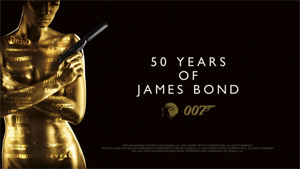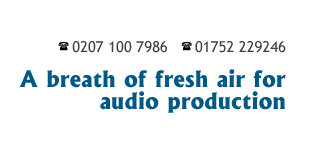Updated 24/01/14:
The Name's Bond - Bond, Business and Branding
If you were a boy growing up in the 1980s it was a good time. There was Dangermouse on the TV, Star Wars in the cinema and Adam Ant on the radio.
However, if you were a fan of James Bond, 1983 was a particularly good year. There were two James Bond films released with the two best Bond actors in competition with each other. Here is the story of why one was more successful than the other and what your business can learn from it.
THE ORIGINS OF THUNDERBALL
The James Bond films were launched in 1962 with Sean Connery in the role of Bond. He initially starred in five movies. One of those five films was called “Thunderball”. Before the first Bond movie was produced, Ian Fleming was trying to get ideas together for Bond movies and met with a couple of guys called Jack Whittingham and Kevin McClory. Together they cobbled together a script but it never got off the ground and Fleming eventually used the ideas for his “Thunderball” novel.
By the time Bond films WERE being made and the time had come to get a “Thunderball” movie off the ground, McClory waded in saying the idea was partially his and he wanted certain rights to the movie. In the end he got a Producer credit and had the option to film a remake but only after 10 years.
HOW DID WE END UP WITH TWO BOND FILMS?
In the ‘70s, Connery did come back to the official series on one occasion for “Diamonds Are Forever”, then the role was handed on to Roger Moore. By the early ‘80s Moore had fulfilled his contract of four Bond movies and had decided not to do a fifth but was eventually coaxed back to shoot “For Your Eyes Only” (released in 1981). But now as far as Moore was concerned that was it.
Meanwhile, Kevin McClory had scored a major coup. Not only was he going to remake “Thunderball” but he had talked Sean Connery into playing James Bond. This got the producers of the Bond series worried. So in 1983 there would be two James Bond movies released.
WHY ROGER MOORE WAS COAXED BACK
Once news got out that Sean Connery would be playing James Bond in the “Thunderball” remake, Albert R Broccoli – the man behind every official James Bond film since 1962 – gave up screen testing actors to take over from Moore. He managed to talk Roger into remaining with the series for his sixth consecutive outing as Bond.
Eventually the 13th official Bond movie – “Octopussy” – was released in cinemas on 6th June. However, the “Battle of the Bonds” (as the media was calling it) turned out to be somewhat delayed.
THE DIFFERENCES IN PRODUCTION
The “Thunderball” remake was now called “Never Say Never Again” (a title suggested by Connery’s wife as a joke about his reluctance to play Bond). The movie didn’t appear in cinemas that summer. There were numerous production problems and it was rumoured that Connery wasn’t getting on with his director, Irvin Kershner (famous for directing “The Empire Strikes Back”).
However, when it came to “Octopussy”, the production was like a well-oiled machine. The team behind Moore’s movie had worked together for decades and were like one big family. Moore’s director, John Glen had also directed him in his previous Bond movie and worked in other positions on previous Bond movies since the 1960s.
WHICH BOND WAS MORE SUCCESSFUL?
Eventually, the troubled “Never Say Never Again” movie WAS released on 7th October – four months after “Octopussy”. But what did the audiences think? While the critics were welcoming Connery back to the role with open arms, the box office figures told another story. Adjusted for inflation, “Octopussy” made $373m at the box office. “Never Say Never Again” made $314m. So “Octopussy” won. But why? We’re always told that Connery is the best Bond. It’s simple…
Branding.
WHAT MAKES A BOND MOVIE A BOND MOVIE?
When we go to see a James Bond film, we’re guaranteed the usual fare: action, glamorous locations, beautiful women and gadgets. But that’s not all. There are certain other elements that make a Bond movie and they can only be supplied by the official series. The gun barrel logo opens every Bond movie (although they have played around with that concept recently). This is where Bond walks across the screen, turns and fires and blood pours down. “Octopussy” had this, “Never Say Never Again” did not.
The pre-title sequence is usually an action-packed mini-movie. This is where Bond is seen either setting up the main plot or finishing a previous assignment. He usually faces certain death but escapes against all odds. “Octopussy” saw Bond escape capture in a miniature jet and blow up a large building. “Never Say Never Again” did not have a pre-title sequence.
THE TITLES AND THE MUSIC
The opening title sequence of a Bond movie is always an event. The main titles for “Octopussy” were designed by Maurice Binder (this was his 11th title sequence for the series). The theme tune (“All Time High”) was written by Tim Rice & John Barry and was performed by Rita Coolidge. “Never Say Never Again” did not have a particularly memorable title sequence or song. John Barry provided the music score to “Octopussy” and had worked on nine of the previous entries in the series. His Bond movie scores are practically an entire music genre of their own. One major element to the film’s score is the “James Bond Theme” – composed by Monty Norman for the first film and arranged by John Barry. The theme is in every official Bond movie. “Never Say Never Again” did not have either Barry or the “Bond Theme”.
THE FAMILIAR FACES
Then there are the familiar characters that pop up – M, Q and Moneypenny. M had been played since the first Bond movie by Bernard Lee. Following Lee’s death he was now replaced by Robert Brown who would play M for the remainder of the decade. Q had been played by Desmond Llewellyn since “From Russia with Love” in 1963 and Moneypenny was played by Lois Maxwell who had played her since “Dr No” in 1962. None of these actors appear in “Never Say Never Again”. They are all in “Octopussy”.
WHAT IT TAKES TO MAKE A BOND MOVIE
So you get the general idea. A Bond movie is not a Bond movie just because someone says, “My name is Bond, James Bond”. Without the familiar supporting cast, the Bond music, the Bond titles, the Bond logo, the Bond pre-title sequence … well, you’re just watching an action movie. Not a Bond movie.
So this is what was lacking from “Never Say Never Again”. Yes, they had Connery but it takes more than one element to create a Bond movie.
THE IMPORTANCE OF BRANDING
So what can we learn from this? Branding is all important. You can have all the best people, equipment, service and resources but you need to have familiar, consistent branding across your entire business and across your entire public presence. Get a logo and a typeface and stick with it. Then get an audio representation of your logo and stick with that too; across radio, on-hold and the soundtracks to all your internet, TV and cinema promotions. If you don’t do this, every time you promote yourself you’re starting from scratch. You’re not building on what’s gone before.
If you’ve never previously considered this, learn a lesson from Mr Bond and “Never Say Never Again”.
Written by Martin Burgess-Moon, Production Executive at Fresh Air Studios Ltd
If you like this article... please share it :)
If you have any comments, feel free to tweet us @freshairstudios
comments powered by DisqusShare on Twitter





